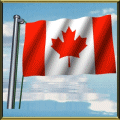Top 10 source countries for immigrants coming to Canada (2004):
- China and Hong Kong: 38,608
- India: 28,183
- Philippines: 13,900
- Pakistan: 13,011
- Iran: 6,491
- United States: 6,470
- Romania: 5,816
- Great Britain: 5,353
- South Korea: 5,351
- Colombia: 4,600
- United Kingdom
- Italy
- U.S.
- Germany
- Portugal
- Netherlands
- India
- Poland
- China
- Countries of the former Yugoslavia
Where do they go?
In 2004:
- Ontario: 53.1 per cent
- Quebec: 18.8 per cent
- British Columbia: 15.7 per cent
- Alberta: 7 per cent
- Manitoba: 3.2 per cent
- Other provinces and territories: 2.4 per cent
- 100,088 chose to settle in Toronto
- 38,045 chose to settle in Montreal
- 32,575 chose to settle in Vancouver.
Immigrants to Montreal tend to come from: China, France, Morocco, Algeria and Haiti.
Immigrants to Vancouver are from: China, India, Philippines, Korea and Taiwan.
Children
Seventeen per cent of immigrants in the 1990s were schoolchildren aged between five and 16. Here's how it breaks down in the metropolitan areas:
- One in six (17 per cent) of school-age children living in Toronto and Vancouver had immigrated within the past 10 years, as had about seven per cent of Montreal's school-age children.
- Urban Ontario:
The cities of Toronto, Markham, Richmond Hill and Mississauga had proportionally higher numbers of new immigrants (one in four) in their school-age populations. - Urban B.C.:
The city of Richmond had the highest proportion of newcomers (32 per cent ) in its school-age population. Nearly three in 10 children in Burnaby in this age group were newcomers, as were 24 per cent in Vancouver, 22 per cent in Coquitlam and 11 per cent in Surrey. - Montreal urban community:
Twelve per cent of school-age children were immigrants who came in the 1990s. But within the MUC, Saint-Laurent had the highest proportion of newcomers (25 per cent) in their school-age population.
Visible minorities and ethnic origin
Three-quarters of immigrants arriving in Canada during the 1990s were visible minorities.
On the flip side, three out of every 10 individuals who were visible minorities were born in Canada. Visible minorities who are most likely to be Canadian-born:
- Japanese (65 per cent)
- Blacks (45 per cent)
- Chinese (25 per cent)
- Arabs and West Indians (21 per cent)
- Latin Americans (20 per cent)
- Koreans (17 per cent)
Chinese are the most populous visible minority in Canada numbering one million. South Asians come in at number 2 with 917,000 people.
While the census reported Canada had people from 200 ethnicities, 39 per cent of the total population reported their ethnic heritage as "Canadian."
Canadian was the most frequently reported origin (alone or in combination with other origins) in almost all provinces in 2001. The exceptions were Saskatchewan, where German was the most frequently reported origin; British Columbia, where English was the most frequent origin; North American Indian in the Northwest Territories; and Inuit in Nunavut.
Top non-official languages spoken at home:
- Chinese*
- Punjabi
- Arabic
- Spanish
- Tagalog (Filipino)
- Russian
- Persian (Farsi)
- Tamil
- Urdu
- Korean
*reported as Chinese, Cantonese, Mandarin or Hakka



1 comment:
Liverpool Migration Services Lahore is a professional services firm dealing in Canadian Skilled Immigration Consultant who intends to live in Australia through different visa categories and Australian Skilled Immigration Program.
For best: Australian Immigration Consultants
Post a Comment